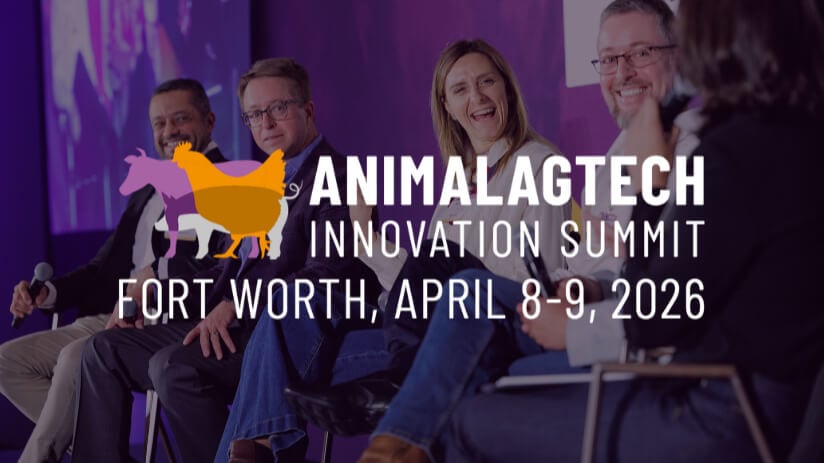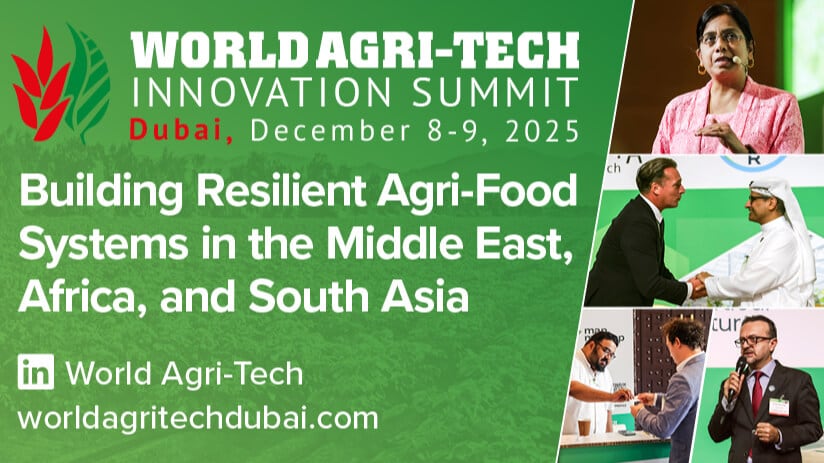Despite its consistent evolution, the animal agtech industry is navigating a complex web of challenges.
For many regions and commodities, 2025 will mark a significant turning point. Although global poultry trade reached record highs in the first quarter of 2025, factors like bird flu outbreaks threaten to disrupt trade dynamics.¹ Meanwhile, despite modest growth in recent years, the dairy market is forecast to accelerate to 1.1% in Q2 and 1.4% Q3 – marking the strongest increase since 2021.²
While seafood and pork are expected to transition from contraction to growth, beef moves from growth to contraction – altering the power balance in the market and supply chain. Although this marks a change in market dynamic, consumer demand for beef is expected to remain strong in 2025, on the back of 2024 demand estimates at record levels since 1986.³
To cope with this demand, the industry must continue to prioritize the health of livestock, improve its productivity, and ensure resilience across the supply chain. While significant headway has been made, challenges remain.
A resurgence of disease outbreaks, increasing climate volatility, regulatory hurdles, and hesitancy to adopt AI technology are just a few issues the sector faces. Addressing these are essential for the industry’s long-term success and resiliency.
Resurgence of disease
Over the past two years, diseases that haven’t been seen for 20 years are resurfacing, with climate change often a contributing factor.⁴ Foot and mouth disease (FMD) is one example of this. In January 2025, FMD was reported in Germany, its first outbreak since 1988. In early March, further cases were detected on a dairy farm in Hungary.⁵
Avian influenza is another concern. In March 2020, outbreaks of LPAI H7N3 and an outbreak of HPAI H7N3 were reported on US turkey farms, with further outbreaks reported across Asia, North America, South America, and Europe.⁶
Although avian influenza has circulated across poultry for hundreds of years, in March 2025 the first instance of HPAI A(H5N1) bird flu was found in dairy cows, causing huge disruption.⁷ Reduced milk production is the main financial loss associated with avian influenza in dairy cows, with some reports estimating a 10-20% drop in production over 7-10 days, costing up to $200 per cow.
To prevent future outbreaks, collaboration is critical. Veterinary officers and animal health companies must shift from reactive approaches to proactive disease management.⁸
At AnimalhealthEurope’s annual conference in July 2025, speakers discussing the value of investing in animal health to prevent diseases recognized the need for more investment in preparedness for animal disease management and veterinary capacity.⁹
Dialogue across regulatory authorities and industry players is essential to implement warning systems, identify risks, and coordinate responses to minimize impact and future outbreaks. Gene editing can offer a biological defense against the disease, rather than relying on antibiotics or herd management alone. After years of extensive research and collaboration between the Pig Improvement Company (PIC) and the FDA, in April 2025 the FDA approved the first gene editing technology making pigs resistant to the highly contagious and costly porcine reproductive and respiratory syndrome (PRRS).¹⁰
Globally, market acceptance of gene editing is growing. Surveys by Genus PIC confirm that consumers are increasingly supportive of gene editing, especially when used to improve animal health and reduce antibiotic use. While Latin America and Asia appear receptive, Europe is still cautious.
Biodiversity monitoring: The next hot topic
Biodiversity monitoring is another significant challenge for the animal agtech industry but is crucial for sustainable farming practices, helping to assess the health of ecosystems, inform management decisions, and ensure the long-term resilience of agricultural systems. But as sustainability reporting requirements ramp up, many businesses struggle to select appropriate metrics for biodiversity monitoring.
Biodiversity encompasses a wide range of variables. The Essential Biodiversity Variables (EBVs) are represented by the core aspects of biological diversity: genetic composition; species populations; species traits; community composition; ecosystem structure; and ecosystem function.¹¹ With so many variables, measurements can be difficult to quantify.
Arla Foods, Danone, and FrieslandCampina are among those actively involved in promoting regenerative dairy practices, recognizing the growing importance of sustainability in the dairy industry, though lack of definition in the dairy industry continues to cause complexities.
“Regenerative dairy practices aim to strengthen the resilience and long-term viability of dairy farms,” says Sanne Griffioen-Roose, Director of Farm Sustainability at FrieslandCampina.
“For farmers, this means focusing on increased use of natural resources and reducing reliance on chemical and fossil-based inputs. Examples include minimal tillage, permanent grasslands, multispecies grassland, and the use of renewable energy.
“As the impact on yield and costs remains uncertain, it is crucial that we, as FrieslandCampina – together with partners like Lidl – share the risk to accelerate the shift towards a more sustainable food system,” adds Griffioen-Roose.
To ensure accurate and comprehensive sustainability reporting, effective tools and technologies are needed. AI and automation can help to manage complexities and meet reporting requirements by improving accuracy and enhancing transparency.
How is AI reshaping decisions?
AI can significantly improve efficiency, helping to optimize every aspect of farm management by streamlining processes, minimizing errors, and providing solutions catered to specific scenarios.
“The livestock sector has a tremendous opportunity to advance digital innovation with precision animal nutrition, amplified through real-time monitoring and data-driven decision-making,” says Corinne Bonadei, Vice President Precision Services at dsm-firmenich.
“Enhancing resilience by diversifying supply sources and leveraging data analytics to anticipate risks will ensure the sector remains productive and adaptable – helping to meet food demand while protecting the planet and animal health.”
However, its adoption also brings challenges. Integrating AI into livestock farming can affect farmer autonomy, potentially reducing control over decision-making and increasing reliance on automated systems. This can cause declines in traditional farming skills and knowledge, while initial costs can also make technologies inaccessible. Investment and training are essential to offset challenges and ensure successful integration, assuring farmers are equipped to use the technology effectively.
Real-world success stories spotlight how these technologies can be effectively integrated. For example, Cargill is using AI to transform its livestock operations. Managing animal welfare on large feedlots can be labor intensive, making it difficult to catch abnormalities in cattle early; ‘Cargill CattleView’ uses drones and AI to collect pictures and assess animal welfare, cattle inventory, and feed bunk readings – ultimately supporting the health and wellbeing of cattle while reducing costs.¹²
Meanwhile, biotech startup Hoofprint Biome, is developing a novel enzyme-based technology to reshape the rumen microbiome, reduce methane emissions, and improve productivity in cattle.¹³ By applying deep biotechnology and AI tools to longstanding agricultural problems, this technology aims to help make cows more efficient, with far less pollution.
“Low margins through the supply chain have made it difficult to drive out cost using traditional strategies, with novel innovations from startups fundamental to driving longer term financial viability for the industry,” says James Caffyn, Partner at Lever VC.
“Whilst the last few years have been challenging, several companies are starting to gain more serious traction on farm, overcoming arguably the hardest step. As leading agtech companies start to gain more penetration, greater consolidation should occur, facilitating further farmer uptake with more simplified and value-added offerings.”
Mitigating risks and cutting costs
Farmers cannot face these challenges alone. While embracing greener incentives is important, mounting pressures, rising costs, and increasingly tight margins can act as deterrents. Investment in the sector is essential.
A 2025 report, published jointly by the European Investment Bank (EIB) and the European Commission, suggests that by 2050 climate change threatens to increase EU agricultural losses by approximately 66%.¹⁴ The report shows that while 20-30% of climate-related losses are ensured by public, private, or mutual systems, the remaining losses must be covered. To help close the gap, the EIB is calling for greater involvement of insurance companies in animal agtech.
Parametric insurance is an example of an innovative, scalable solution to mitigate climate risks. It provides predetermined payouts based on measurable environmental triggers, such as rainfall levels or vegetation health, eliminating the need for costly and time-consuming on-site assessments.
Insurers can swiftly validate claims and deliver faster pay-outs thanks to the satellite imagery used to monitor environmental conditions. This transformative approach eliminates the need for costly and time-consuming on-site assessments, while empowering farmers to become climate-smart entrepreneurs.
Additionally, the EU Commission’s agri-food strategy, ‘Vision for Agriculture and Food‘, aims to make positive changes to the future of EU farming.¹⁵ The Vision aims to increase innovation and digitalization int the agri sector in order to prioritise food security and create new opportunities. Unlike the previous Farm to Fork strategy, the EU’s Vision favours incentives over penalties, including financial incentives for farmers who exceed existing environmental requirements.¹⁶
Climate-smart, resilient livestock systems
To facilitate the conversation around climate-smart, resilient livestock systems, The Animal AgTech Innovation Summit returns to Amsterdam on October 16-17.
Gathering over 250 senior decision-makers from every stage of the global animal protein supply chain, the summit will include a dynamic agenda with expert panels, innovative technology showcases and forward-looking case studies. Delegates can take advantage of dedicated 1-1 meeting spaces, the startup arena, and roundtables to discuss specific challenges and opportunities facing the industry.
The summit will tackle urgent topics such as vaccines and predictive analytics for animal health innovations, AI-powered management, genetic advancements, and strategic investment in animal agtech to ensure sustainable, long-term growth.
As industry players look towards the future, new opportunities for innovation and collaboration are creating pathways for growth and proactive management.
Register now for The Animal AgTech Innovation Summit for two days of discussions and networking opportunities. Super Early Bird pricing expires August 7.
References
- Rabobank. Rabobank. Global animal protein outlook 2025.
- Rabobank. Too good to be true.
- Rabobank. Global animal protein outlook 2025.
- McDermott A. News Feature: Climate change hastens disease spread across the globe. Proc Natl Acad Sci U S A. 2022 Feb 15;119(7):e2200481119.
- Department for Environment, Food and Rural Affairs. Foot and Mouth Disease in Germany.
- Youk, S.; et al. Highly Pathogenic Avian Influenza A(H7N3) Virus in Poultry, United States, 2020. Emerg Infect Dis. 2020 Dec;26(12):2966-2969.
- CDC. Current Situation: Bird Flu in Dairy Cows.
- AnimalhealthEurope. AnimalhealthEurope and NOAH Urge UK-EU Veterinary Medicines Agreement to Safeguard Animal Health.
- AnimalhealthEurope. Preventing Disease X: the value of investing in animal health.
- AVMA. FDA approves gene-editing tech creating PRRS-resistant pigs.
- Nature Based Insights. Defining Biodiversity.
- Cargill. ‘It’s already here:’ How AI is transforming livestock farmer operations.
- AgTechNavigator. Harnessing enzymes to tackle livestock methane: Hoofprint Biome’s bold bet on microbiome innovation.
- Fi Compass. Insurance and Risk Management Tools for Agriculture in the EU.
- European Commission. Commission presents its roadmap for a thriving EU farming and agri-food sector.
- AgTechNavigator. Does the EU have a concrete plan for agri-food?








